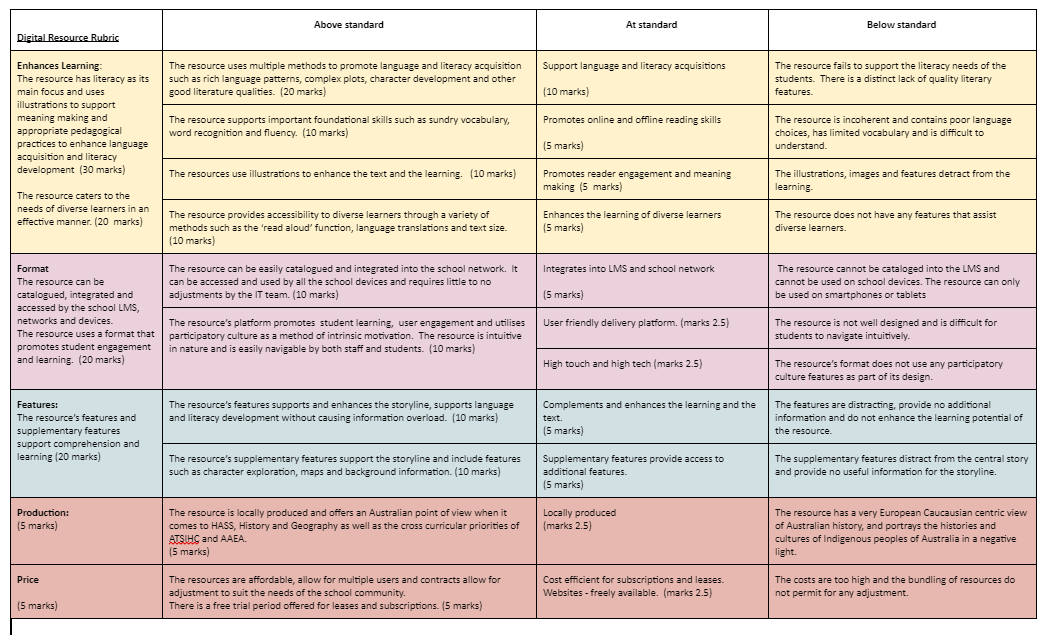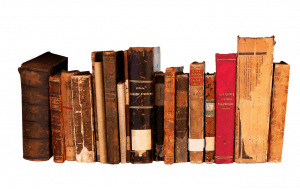I have just finished writing another saga about the the process that goes into evaluating digital resources for a school collection and it occurred to me that assessing resources would benefit from a rubric.
So I made one up. This way TL can grade the digital resources. The marking system emphasises the higher value some criteria have over others.
The sources for my brilliance are below.
References for this rubric:
ALA Office for Intellectual Freedom (2018) Selection & Reconsideration Policy Toolkit for Public, School, & Academic Libraries. American Library Association. Retrieved from http://www.ala.org/tools/challengesupport/selectionpolicytoolkit/criteria
El Mhouti, A., Nasseh, A., & Erradi, M. (2013). How to evaluate the quality of digital learning resources? International Journal of Computer Science Research and Application. Retrieved from https://www.researchgate.net/publication/260392089_How_to_evaluate_the_quality_of_digital_learning_resources
Learning for the future: developing information services in Australian schools 2nd edition (2001). Curriculum Corporation, Carlton South. Retrieved from http:// www.curriculumpress.edu.au/main/goproduct/12405.
Leu, D.J, Forzani, E.,Timbrell, N., & Maykel., C. (2015) . Seeing the forest, not the trees: Essential technologies for literacy in primary grade and upper elementarty grade classroom. Reading Teacher 69: (2), p.139-145. Retrieved from https://eric.ed.gov/?id=EJ1073399.
Mantei, J., Kipscombe, K., & Kervin, L. (2018). Literature in a digital environment (Ch. 13). In L. McDonald (Ed.), A literature companion for teachers. Marrickville, NSW: Primary English Teaching Association Australia (PETAA).
Mitchell, P. (2011). Resourcing 21st century online Australian Curriculum: the role of school libraries. FYI: The Journal for School Information Professionals 15(2). Retrieved from CSU Library.
National Library of New Zealand, (n.d.a). Your library’s digital collection. Service to Schools. Retrieved from https://natlib.govt.nz/schools/digital-literacy/your-librarys-role-in-supporting-digital-literacy/your-librarys-digital-collection
National Library of New Zealand. (n.d.b). Selecting and purchasing resources. Service to Schools. Retrieved from https://natlib.govt.nz/schools/school-libraries/collections-and-resources/selecting-resources-for-your-collection/selecting-and-purchasing-resources
Walker, S., Jameson, J., & Ryan, M. (2010). Chapter 15 – Skills and strategies for e-Learning in a participatory culture. In Sharpe, R., Beetham, H., & de Freitas, S. (2010). Rethinking Learning for a Digital Age. Retrieved from CSU library.
Yokota, J., & Teale, W. (2014). Picture books and the digital world. The Reading Teacher 67(8), pp.577-585. DOI: 10.1002/trtr.1262

